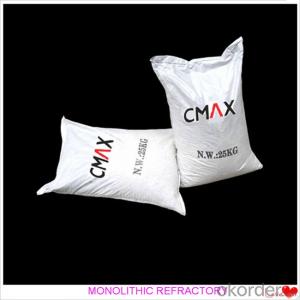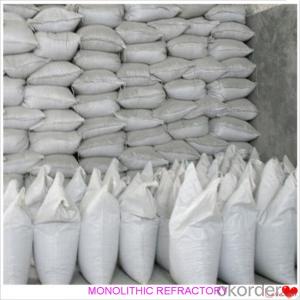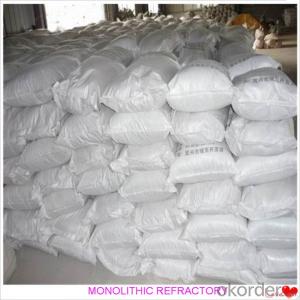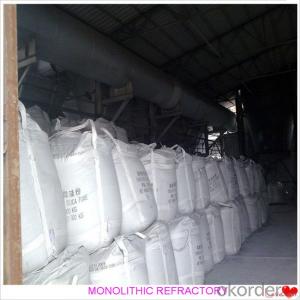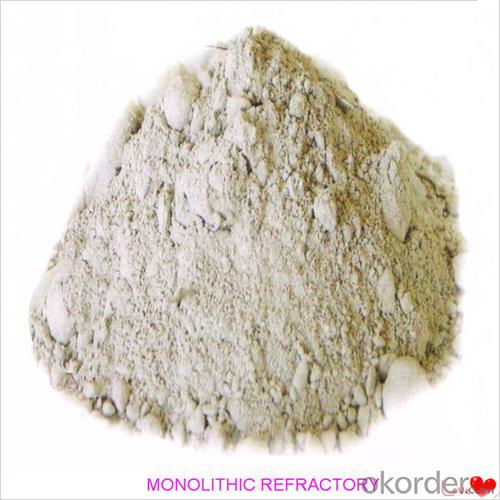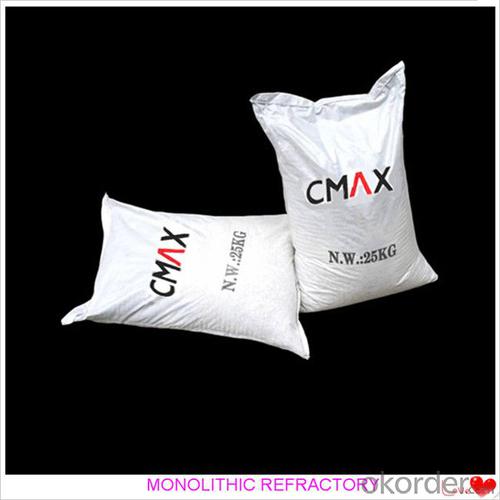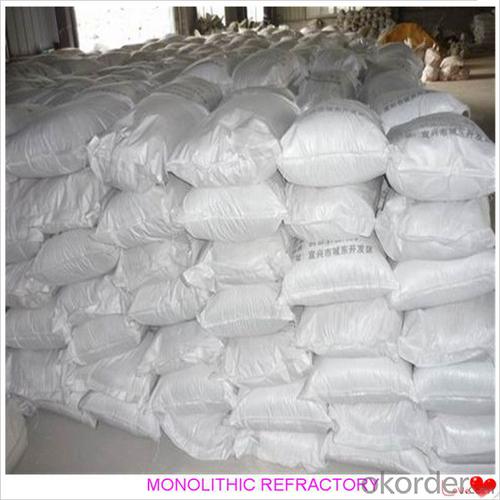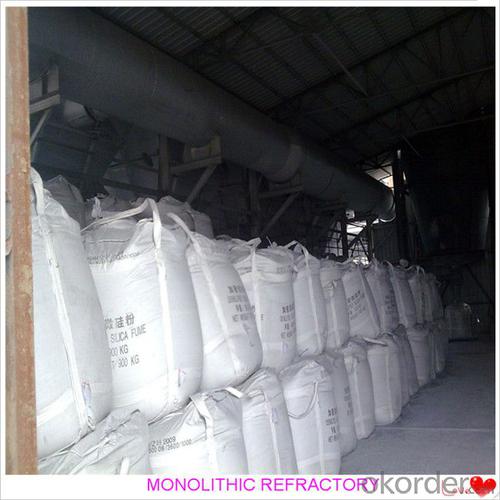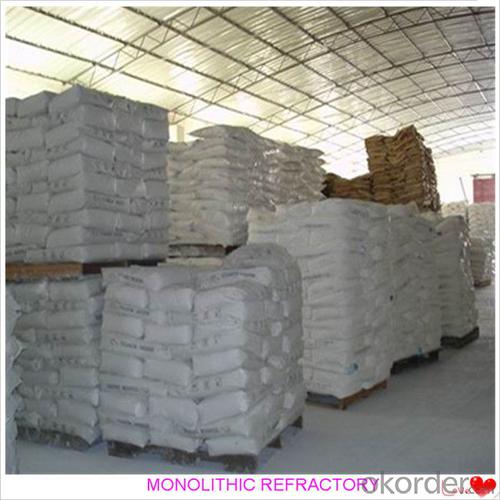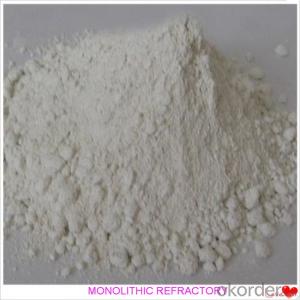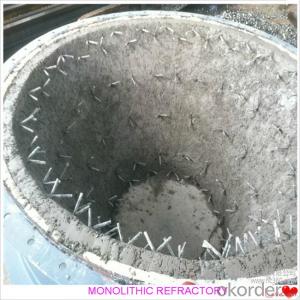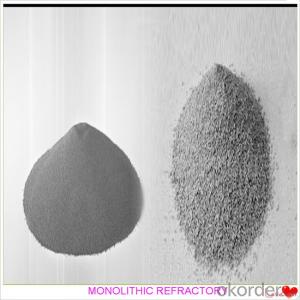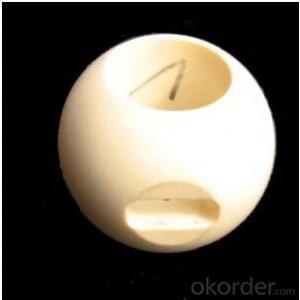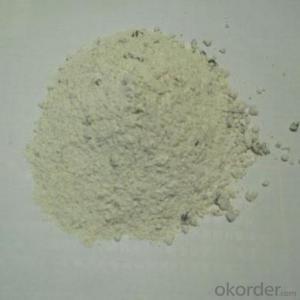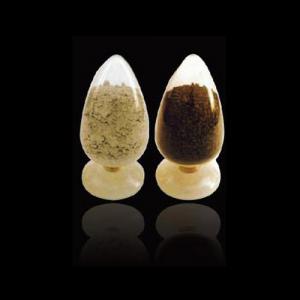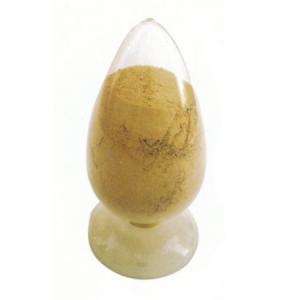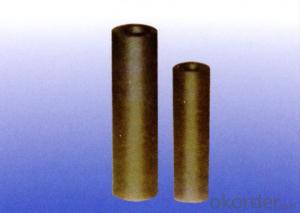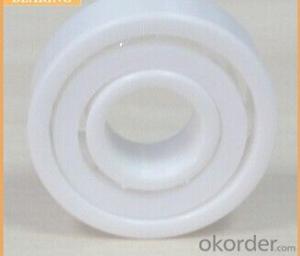Monolithic Refractories for Iron and Steel Industry:Corundum Castable for Fireplace and Industrial Furnace
- Loading Port:
- China main port
- Payment Terms:
- TT OR LC
- Min Order Qty:
- 100 kg
- Supply Capability:
- 3000000 kg/month
OKorder Service Pledge
OKorder Financial Service
You Might Also Like
Corundum Castable For Fireplace and Industrial Furnace in Iron and Steel
Product Description:
Corundum castable is manufactured according to international standards. The product is famous for its excellent abrasion resistance and low thermal conductivity. Further, these can be provided in different specifications as required by the clients. The Corundum castables are used high purity raw materials and additives as the main material, and made of under superfine powder adding technology.
Product Advantages:
The material has excellent structural stability and air tightness, and has high physical and chemical properties, also has a fine working ability.They should be used with the same material products.
Product Applications:
For feature of Corundum castable, they have excellent abrasion resistance, thermal shock resistance, high-temperature resistance, anti-corrode and have high intensity.
Designed for refractory lining of blast furnace iron and slag runners, skimmers and soon
They can be used in troughs of small and mid size BFs and in all positions of the troughs where fast tapping is required.
Product Specifications:
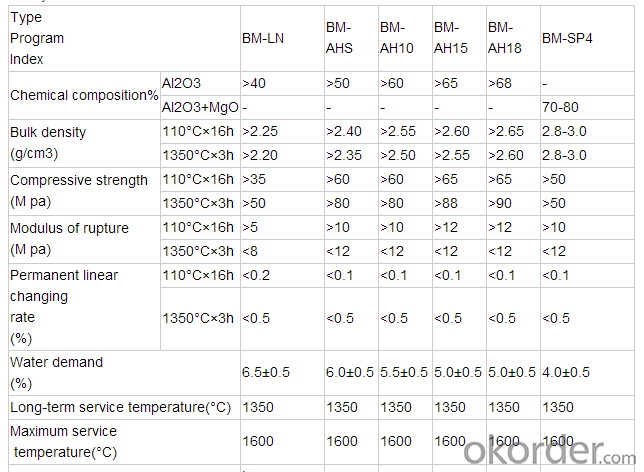
FAQ:
1. How you can control your quality?
For each production processing, we have complete QC system for the chemical composition
and Physical properties. After production, all the goods will be tested, and the quality certificate
will be shipped along with goods.
2. What's your delivery time?
It usually needs about 20days- 45 days after receiving the deposit.
3. Do you provide free samples?
Yes, we can provide a free sample for testing, If we have sample in stock,
The quantity based on the material type, The buyer should bear all the shipping costs.
4. What's your payment terms?
We can accept 30% deposit, 70% balance before shipment for ordrs over $ 2000.
5. Can we visit your Company?
Yes, certainly. You are very welcome to China and we will be honored to have a customer and friend.
Product Picture:

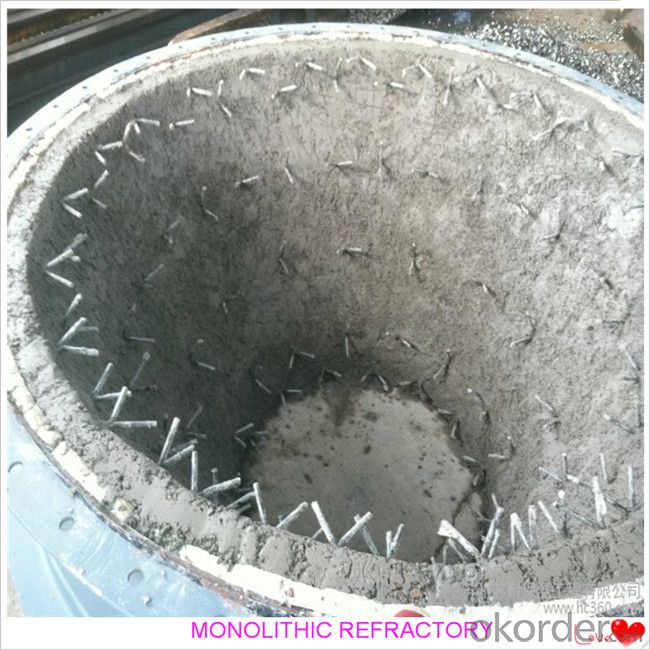

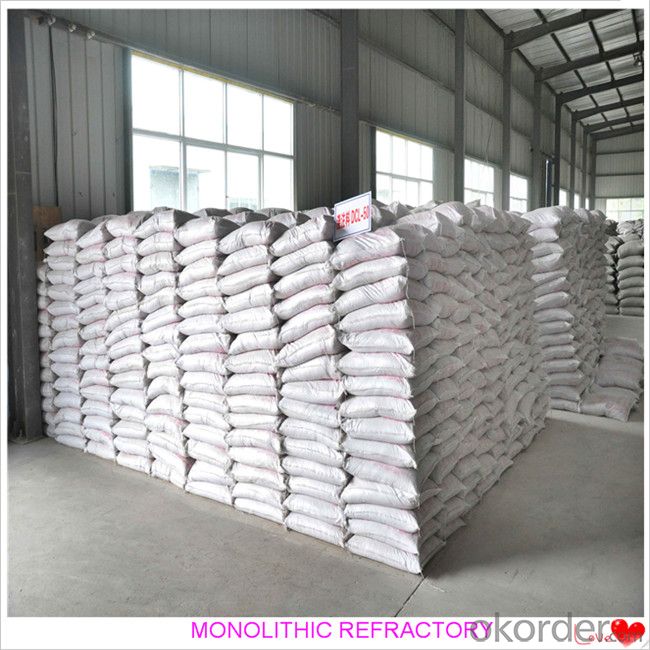
- Q: What are the challenges in using monolithic refractories in the iron and steel industry?
- One of the main challenges in using monolithic refractories in the iron and steel industry is their susceptibility to thermal shock and spalling. Monolithic refractories lack the structural integrity of bricks, making them more prone to cracking and disintegration under extreme temperature fluctuations. This can result in frequent repairs and replacements, leading to increased downtime and costs for the industry. Additionally, the application of monolithic refractories requires skilled labor and precision, as their installation requires careful mixing and proper curing to ensure optimal performance.
- Q: How do monolithic refractories impact the quality and performance of iron and steel products?
- Monolithic refractories play a crucial role in ensuring the quality and performance of iron and steel products. These refractories are specifically designed to withstand extremely high temperatures and harsh conditions, making them an essential component in various applications within the iron and steel industry. Firstly, monolithic refractories contribute to the overall quality of iron and steel products by providing excellent thermal insulation. They help to maintain a consistent and controlled temperature environment in the manufacturing process. This is particularly important in blast furnaces, where temperatures can reach up to 2,000 degrees Celsius. By effectively insulating the furnace walls, monolithic refractories help to minimize heat loss and ensure efficient energy utilization. This ultimately leads to higher-quality products with improved mechanical properties. Secondly, monolithic refractories offer superior resistance to chemical and physical wear. In the steelmaking process, molten metal and slag can be highly corrosive, causing erosion and degradation of the refractory lining. Monolithic refractories are specifically engineered to withstand these aggressive environments, providing excellent resistance to chemical attack and mechanical stress. By maintaining the integrity of the lining, they prevent contamination and prolong the lifespan of the furnace or ladle, ultimately enhancing the quality of the final iron and steel products. Furthermore, monolithic refractories enable greater design flexibility and ease of installation. Unlike traditional refractory bricks, which require meticulous placement and fitting, monolithic refractories can be applied as a single, cohesive material. This allows for more complex shapes and structures, resulting in optimized furnace design and improved thermal efficiency. Additionally, the ease of installation reduces downtime during maintenance and repairs, ensuring continuous production and minimizing disruptions to the production process. Overall, monolithic refractories significantly impact the quality and performance of iron and steel products. They provide excellent thermal insulation, resist chemical and physical wear, and offer greater design flexibility. By ensuring consistent and controlled temperature environments, preventing contamination, and enabling efficient production processes, monolithic refractories contribute to the production of high-quality iron and steel products that meet the stringent requirements of various industries.
- Q: How do monolithic refractories contribute to the overall productivity of iron and steel production?
- Monolithic refractories play a crucial role in enhancing the overall productivity of iron and steel production. These refractories are widely used in various applications such as furnaces, ladles, and tundishes, offering excellent thermal stability and resistance to chemical attacks. By providing a durable lining, monolithic refractories ensure longer campaigns and reduced downtime for repairs and maintenance. This leads to increased production efficiency, reduced energy consumption, and improved product quality, ultimately contributing to the overall productivity of iron and steel production.
- Q: What types of monolithic refractories are commonly used in the iron and steel industry?
- Due to their exceptional resistance to extreme temperatures and mechanical stresses, various types of monolithic refractories are widely used in the iron and steel industry. These refractories play a crucial role in lining furnaces, ladles, and other equipment used in the production of iron and steel. One commonly employed monolithic refractory in this industry is castable refractory. It is a blend of refractory aggregates, binders, and additives that can be poured or cast into different shapes and sizes. Castable refractories are versatile and easy to install, making them suitable for lining large furnaces and ladles. Additionally, they offer excellent resistance to thermal shocks and provide good thermal insulation. Another type of monolithic refractory utilized in the iron and steel industry is plastic refractory. It comprises a high-alumina refractory aggregate mixed with a bonding agent, typically clay. Plastic refractories possess high plasticity and can be easily shaped by hand or with a trowel. They are commonly used for repairing and patching in furnaces and ladles. Ramming refractories are also frequently employed in the iron and steel industry. These refractories consist of granular refractory materials blended with a binder. They are installed by forcefully ramming the mixture into the desired shape using either a pneumatic hammer or manual ramming tools. Ramming refractories offer exceptional resistance to abrasion and erosion, making them suitable for lining the bottoms of furnaces and other areas subjected to intense mechanical wear. Lastly, gunning refractories find wide application in the iron and steel industry. Gunning refractories are composed of fine refractory powders mixed with water or a bonding agent. They are applied using a gunning machine, which propels the refractory material onto the surface that requires lining. Gunning refractories are commonly used for repairing and maintaining the linings of ladles, tundishes, and other equipment. In conclusion, the iron and steel industry heavily relies on a variety of monolithic refractories, including castables, plastics, rammings, and gunnings, to ensure the reliable and efficient operation of their equipment in high-temperature environments. These refractories offer outstanding thermal insulation, resistance to thermal shocks, and mechanical strength, which are essential for the production of iron and steel.
- Q: How do monolithic refractories handle thermal expansion and contraction?
- Monolithic refractories are designed to handle the challenges of thermal expansion and contraction. These materials are composed of a single solid structure, as opposed to the traditional brick or tile forms of refractories. This unique composition allows monolithic refractories to better accommodate the thermal stresses associated with temperature changes. One way that monolithic refractories handle thermal expansion and contraction is through their ability to withstand high temperatures. These materials are typically engineered to have a high melting point, allowing them to maintain their structural integrity even under extreme heat conditions. This property helps to prevent the refractory from cracking or disintegrating due to thermal expansion. In addition, monolithic refractories often contain a binder or bonding agent that helps to hold the refractory particles together. This binder can be formulated to have a certain degree of flexibility, allowing the material to expand and contract without cracking or breaking. This flexibility helps to absorb the stresses caused by thermal expansion and contraction, ensuring the longevity and performance of the refractory. Furthermore, monolithic refractories can be applied in a way that allows for expansion and contraction. These materials can be installed with joints or gaps between sections, which can accommodate the movement caused by temperature changes. This technique, known as joint design or expansion joint systems, allows the refractory to expand and contract without causing damage to the overall structure. Overall, monolithic refractories are designed to handle thermal expansion and contraction by withstanding high temperatures, incorporating flexible binders, and using joint design techniques. These properties enable them to maintain their structural integrity and performance in extreme heat conditions, making them a reliable choice for applications that require resistance to thermal stress.
- Q: How do monolithic refractories contribute to the reduction of heat loss in iron and steel plants?
- The unique properties and application methods of monolithic refractories are crucial in the efforts to minimize heat loss in iron and steel plants. These refractories consist of single, continuous materials without joints or seams, providing exceptional thermal insulation and reducing heat transfer. A key factor in the reduction of heat loss is the low thermal conductivity of monolithic refractories. These materials possess a high resistance to heat flow, effectively preventing the loss of thermal energy from furnaces, ladles, and other equipment used in iron and steel production. By creating a barrier between the hot interior and cooler surroundings, monolithic refractories effectively minimize heat escape and maintain a stable and efficient thermal environment. Furthermore, monolithic refractories are known for their excellent adhesion and strength, allowing them to form a tight seal and eliminate gaps or cracks in equipment linings. This prevents the entry of cold air and the escape of hot gases, further reducing heat loss and ensuring optimal operating temperatures are maintained. Another advantage of monolithic refractories is their ease of application and repair, leading to a more efficient and cost-effective maintenance process. Regular inspections and repairs can address any wear or damage to the refractory lining, ensuring optimal performance and minimal heat loss over time. In conclusion, monolithic refractories significantly contribute to the reduction of heat loss in iron and steel plants through their low thermal conductivity, excellent adhesion, and high strength. By effectively insulating equipment and preventing heat escape, these refractories promote energy efficiency and productivity in the iron and steel industry.
- Q: What are the key properties of shotcrete mixes used for monolithic refractory applications?
- The key characteristics of shotcrete mixes utilized in monolithic refractory applications are as follows: 1. Strong: Shotcrete mixes for monolithic refractory applications must possess a high level of compressive strength in order to withstand the intense temperatures and stresses endured in refractory environments. This ensures that the shotcrete lining remains intact and provides effective insulation and protection. 2. Minimal Porosity: Shotcrete mixes should exhibit low porosity to minimize the infiltration of gases and liquids into the refractory lining. This is crucial in preventing corrosion and degradation of the lining, ensuring its long-lasting durability. 3. Thermal Stability: Shotcrete mixes must demonstrate exceptional thermal stability to endure the extreme heat conditions encountered in refractory applications. They should also possess low thermal conductivity to effectively insulate the structure and prevent heat transfer, thus preserving the integrity of the refractory lining and optimizing its performance. 4. Resistant to Wear and Tear: Shotcrete mixes used in monolithic refractory applications should have high resistance to abrasion, enabling them to withstand the mechanical wear caused by the movement of materials and particles. This property ensures that the refractory lining remains intact and provides effective protection against erosion. 5. Resistant to Chemicals: Shotcrete mixes should be resistant to chemical attacks from molten metals, slag, and other corrosive substances commonly found in refractory applications. This resistance helps to maintain the integrity of the lining and extend its service life. 6. Easy to Work with: Shotcrete mixes should exhibit good workability to facilitate easy placement and application. This allows for efficient and precise installation of the refractory lining, ensuring the desired thickness and coverage. In summary, shotcrete mixes utilized in monolithic refractory applications must possess a combination of high strength, low porosity, thermal stability, abrasion resistance, chemical resistance, and workability in order to guarantee optimal performance and durability in refractory environments.
- Q: How do monolithic refractories resist chemical attack from molten metals and slags?
- A combination of factors enables monolithic refractories to withstand chemical attack from molten metals and slags. Firstly, these refractories are composed of high-quality materials with excellent chemical resistance properties, such as alumina, magnesia, or silica. These materials possess a stable chemical structure that can endure the corrosive nature of molten metals and slags. Secondly, additives or binders are often incorporated into monolithic refractories to enhance their resistance to chemical attack. By improving the refractory's capability to form a protective layer on its surface, these additives act as a barrier between the refractory material and the corrosive molten metal or slag. Furthermore, monolithic refractories are designed with a dense microstructure that restricts the infiltration of molten metals and slags. This dense structure minimizes the pathways through which corrosive agents can reach the refractory material, effectively reducing the risk of chemical attack. In addition, proper joint design and anchoring systems can be employed during the installation of monolithic refractories to prevent the infiltration of corrosive substances. This ensures that the refractory lining remains intact and capable of effectively resisting chemical attack. In summary, the combination of high-quality materials, additives, dense microstructure, and proper installation techniques contribute to the ability of monolithic refractories to resist chemical attack from molten metals and slags. This, in turn, extends their lifespan and maintains the integrity of the refractory lining in high-temperature applications.
- Q: How are monolithic refractories different from traditional refractory bricks?
- Monolithic refractories, unlike traditional refractory bricks, are composed of a single, homogeneous structure. This structural distinction leads to several differences between the two. Firstly, monolithic refractories provide greater flexibility and versatility in terms of shape and installation. They can be easily molded and shaped to fit specific applications and complex geometries, making them ideal for lining furnaces, kilns, and other high-temperature equipment. Secondly, monolithic refractories have superior thermal shock resistance compared to traditional refractory bricks. Their uniform structure allows for better heat distribution, minimizing the risk of thermal stress and cracking. This makes them suitable for applications with rapid temperature fluctuations or severe thermal cycling. Additionally, monolithic refractories often exhibit better overall performance in terms of strength, mechanical properties, and resistance to chemical attack. The absence of joints and seams eliminates potential weak points, resulting in a more durable and reliable lining. Moreover, the homogeneous structure provides better resistance to corrosive agents, ensuring prolonged service life in harsh environments. Lastly, monolithic refractories offer advantages in terms of installation and maintenance. Their monolithic nature simplifies the installation process, reducing labor and time requirements. Additionally, repairs and maintenance can be carried out more easily and cost-effectively compared to traditional refractory bricks, which may require the replacement of entire sections or bricks. In summary, monolithic refractories differ from traditional refractory bricks in structure, flexibility, thermal shock resistance, performance, and installation characteristics. These differences make monolithic refractories a preferred choice in many high-temperature applications, offering improved efficiency, durability, and ease of use.
- Q: What are the recommended installation techniques for monolithic refractories?
- The recommended installation techniques for monolithic refractories typically involve proper surface preparation, mixing of refractory materials, and precise application. It is crucial to clean and remove any loose debris from the substrate before installation. The refractory materials should be mixed thoroughly with the appropriate water content to achieve the desired consistency. It is recommended to use vibration or tamping techniques during application to remove air pockets and ensure proper compaction. Careful curing and drying processes should be followed to prevent thermal shock and achieve optimal performance.
Send your message to us
Monolithic Refractories for Iron and Steel Industry:Corundum Castable for Fireplace and Industrial Furnace
- Loading Port:
- China main port
- Payment Terms:
- TT OR LC
- Min Order Qty:
- 100 kg
- Supply Capability:
- 3000000 kg/month
OKorder Service Pledge
OKorder Financial Service
Similar products
Hot products
Hot Searches
Related keywords

